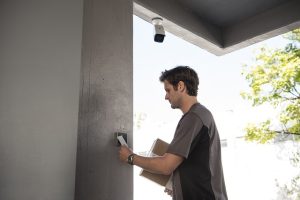
Not all locks are mechanical. While most locks have moving parts, some of them use an electronic method of operation. Radio frequency identification (RFID) locks fall under the latter category. They eliminate the need for traditional keys while offering a more convenient form of access control.
What Are RFID Locks?
RIFD locks are electronic locking systems that leverage radio waves to communicate with a card or key fob. They are commonly used on doors, gates, elevators, gyms and parcel containers. Only users with the appropriate card or key fob will be able to access the restricted area.
Since they don’t use traditional keys, RFID locks are convenient and easy to use. You don’t have to worry about inserting and turning a traditional key. Instead, you can unlock an RFID lock simply by placing the card or key fob near it.
How RFID Locks Work
While there are different types of RFID locks, they all use radio waves for authentication purposes. RFID locks send and receive data wirelessly via radio waves with cards and key fobs. If a nearby card or key fob is registered as a valid user, the RFID lock will grant access to the restricted area.
The reader is the part of an RFID lock that generates and sends a radio signal. When you place a card or key fob near it, a chip-based “tag” inside of the card or key fob will activate. An antenna on the tag will identify the reader’s radio signal, allowing for two-way communication. The tag will send the user’s credentials to the reader, and assuming it matches, the RFID lock will disengage.
Passive vs Active RFID Locks
RFID locks can be classified as passive or active depending on whether the tag has its own battery. Passive RFID locks don’t have a battery embedded in the tag. They are still powered, but the tag gets its power from the radio waves sent by the reader.
Active RFID locks are different in the sense that the tag has its own battery. The tag — the computer chip in the card or key fob — has a small embedded battery. Active RFID locks cost more than their passive counterparts, but they allow for longer signal distances. You can open an active RFID lock from far away while holding the card or key FOB. In comparison. you must hold the card or key fob very close to unlock a passive RFID lock.
